 Retired senior RSPBA adjudicator Alistair Aitken OBE gives his thoughts on the Grade 1 Qualifier, the Novice Juvenile and the Juvenile contests…….
Retired senior RSPBA adjudicator Alistair Aitken OBE gives his thoughts on the Grade 1 Qualifier, the Novice Juvenile and the Juvenile contests…….
The RSPBA World Pipe Band Championships took place on Glasgow Green, Glasgow on Friday 14th and Saturday 15th August. The Grade 1 qualifying heats were held on the Friday.
All other grades and the Grade 1 Finals took place on the Saturday. I had the opportunity to listen from the main stand to all the Grade 1 bands which played in the Qualifiers in the main arena. The Editor asked, as a former RSPBA Drumming and Ensemble Adjudicator, if I would provide some general comments for Piping Press regarding these performances as well as on the Juvenile Finals on Saturday. I am conscious that, as ever, the views of others will differ widely from my own and I would also like to make it clear that I have deliberately refrained from linking my comments to the official results. I am well aware of the difficulties associated with judging any pipe band competition, let alone the World Championships. I now know from personal experience that the process is much easier sitting comfortably in the stand. For what they are worth, however, the following were my general impressions from a ‘musical ensemble’ perspective, listening from a raised position at the head of the bands where I could hear how the drumming projected through the pipes.
Firstly, a general comment. It was good to see entries for the Championships from 230 bands in total, some 54 of which were from overseas. It was said on the day that 40% of the players were under the age of 21, and the fact that there were nine entries in the Juvenile competition and 32 in Novice Juvenile also illustrates the solid foundation which exists for the future. The stats also highlight not just the wide interest in the World Championships themselves, but the strength of the pipe band movement worldwide. The RSPBA, Glasgow Life and the City of Glasgow Council are to be congratulated for so effectively organising and bringing this all together as such a prominent event on an annual basis.
Grade 1 Qualifiers
It was also good to see a strong entry of 22 bands in the Grade 1 competition. Perhaps not so good is the statistic that only eight of the bands were from Scotland, around half of the number which existed 30 years or so ago. No doubt someone will argue that the reason for that is that the Grade 1 bands are now double the size! However, I think there is a more important message for Scotland in the stats, irrespective of the very welcome advances there have been in the high standards being achieved in other countries.
On Friday morning I listened to the 11 Grade 1 bands which played in the MSR competition in the main arena. In the afternoon I then heard the other 11 playing in the Medley competition in the same arena. We were lucky with the weather as, although dull, it did not rain and the consistent temperature undoubtedly would have helped the tuning and the playing. Consequently the performances of all 22 generally were of a high standard, although as always a few stood out more than others.
MSR Qualifier 1
In this MSR Qualifier I thought four performances in particular caught the ear in particular, in the order they played rather than my order of preference:
Scottish Power produced a powerful collective performance which started with a fluent and rhythmic presentation of the march The Royal Scottish Piper’s Society. I am conscious of Robert Wallace’s comments about this tune earlier in the season, but it is one of my favourite tunes from my Edinburgh City Police Pipe Band days and the quality of the Scottish Power rendition brought back fond memories. The strathspey and reel were equally well executed and interpreted. The tonal balance of the band was excellent, with a powerful and sweet piping sound through which all the drum sounds projected clearly. My only slight criticism was that the snare drums, although producing very effective musical interpretation, were a little light at times and would have benefited from more in terms of expression and dynamics. The band was well held together with a nice deep and rich bass drum sound.
Inveraray & District also had a very polished performance with excellent clarity and interpretation. My impression was that the piping tone was a touch on the harsh side. The snare drum sound projecting through the pipes also, for my liking, lacked crispness, affecting the overall tonal balance of the band. The drumming also came through a little forced at times although everything was very well-integrated. What impressed me was the musical interpretation of the tunes, particularly the dance style of the strathspey playing.
Greater Glasgow Police Scotland also had a powerful performance with good musical effect. Another band with a distinctive piping sound and excellent clarity of playing. Again, however, the snare drum sound for me was rather dull in relation to the pipes. The snare drummers at times came across rather deliberate on some phrases in the march and even more so in the strathspey Atholl Cummers, although the material was top quality in terms of technical difficulty and interpretation. A deep and well-balanced bass drum sound helped draw the sounds together.
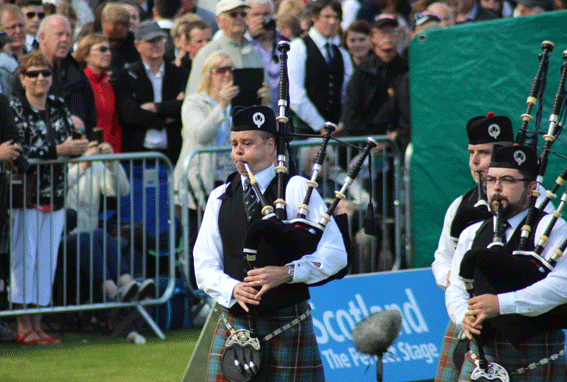
Peoples Ford Boghall & Bathgate Caledonia produced what must have been one of their best performances of the season. It was bright, powerful, fluent, rhythmic and musical. It had for me the best co-ordinated ‘pipe band’ sound of the MSR performances – nicely balanced chanter/drone tone with all the drums blending well in terms of pitch and weight. The clarity and sound projection of all the instruments was first class, and the whole performance came across relaxed, fluent and musical.
My brief thoughts on the other MSR performances, again in the order they played, were:
78th Highlanders Halifax Citadel – overall a little too controlled throughout, with the drummers labouring a shade at times and generally lacking depth of sound. The execution of pipes and drums did not project clearly in places, but the sounds were well-balanced.
Dowco Triumph Street – some slight distortions in the piping sound at times on top register notes. The drumming came through well but in my view lacked dynamics and rhythmic flow in the strathspey. Again a good balanced collective band sound.
Vale of Atholl – generally a solid piping performance but the drummers lacked musical influence in terms of expression and interpretation. The drum sound was also a little lacking in depth and clarity of projection through the pipes.
Stuart Highlanders, USA – the piping sound lacked depth and had slight distortions in places. The drumming was clear but I thought both the strathspey and the reel were a shade too controlled and slightly laboured, which affected the general rhythmic flow.
Toronto Police, Canada – a good balanced band sound but generally the performance was in my view too controlled and relaxed, although the integration was generally good.
Cullybackey – the pipe corps lacked depth of sound due to having fewer players than other bands and there were some distortions in places, but the band balance and sound projection were good. The musical interpretation from the drummers was very good, and I liked the rhythmic interpretation of the strathspey.
Denny & Dunipace – the snare drums projected through a little dull in relation to the pipes, which affected the overall tonal balance of the band. The pipes seemed to lack clarity in the march but were much more stable in the strathspey and reel. The execution from the snare drummers was very clear but at times the drummers seemed to be trying to push slightly ahead of the pipers, particularly in the strathspey.
I should also say that in all the performances the tenor drummers were well-balanced and none came through as too dominant. There were also some impressive displays of flourishing.
Medley Qualifier 2
In this competition I thought five performances shone, but there was also serious competition from some of the others. Again my comments are by order of play rather than my order of preference:
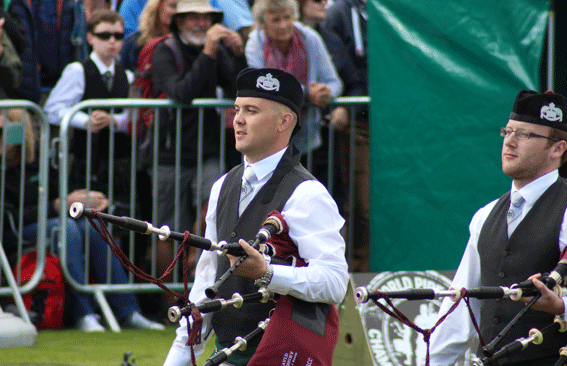
St Laurence O’Toole produced a very musical and well-constructed medley. My only criticisms were that the snare drum sound came through rather harsh in relation to the powerful piping sound. At times the snare drumming was also rather forced and the weight of playing could have been varied for more subtle musical interpretation. Slight integration issues between pipes and drums also featured in a couple of the tunes.[wds id=”9″]
Field Marshal Montgomery as usual were very impressive. A powerful, resonant and well-balanced band sound influenced by their renowned deep drone sound. A relaxed and fluent presentation, and pure music from the interpretation of the tunes. Excellent clarity from all sections, very effective harmonies, influential drumming musically, and immaculate playing.
Police Scotland Fife: A quality performance with a solid piping sound and good clarity of execution. Snare drum sound came through a little harsh in relation to the pipes and at times the drummers tended to dominate and accent in unexpected places, which I thought affected the rhythmic flow. Some very innovative interpretation of the tunes, particularly towards the end.
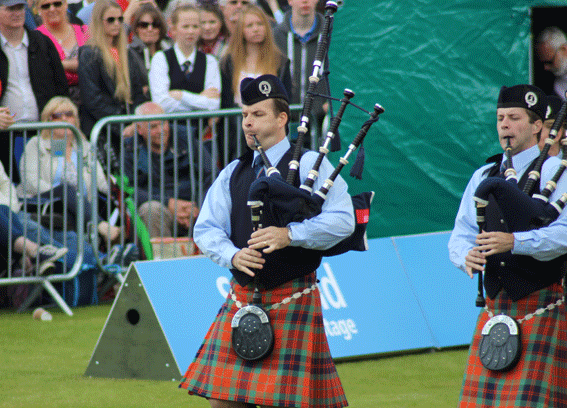
Simon Fraser University, Canada: A lively performance also with some very innovative interpretation of tunes, particularly the opener Donald Cameron’s Powderhorn Hornpipe. Good balance of band sounds although the piping sound lacked brightness. The band integration was good with effective influence from the drum corps, although at times the snare drumming came through a little forced. The bass section contributed well and a nice deep bass sound pulled it all together.
Shotts & Dykehead Caledonia: Another impressive performance. Distinctive piping sound very akin to that of Field Marshal Montgomery but not quite the same depth. Excellent musical interpretation as a band. However, the snare drums were a shade dull in relation to the pipes and at times the drumming came through rather forced and intense, although technically excellent. Also there were some slight integration issues between pipes and drums at times.
My impressions of the other performances, by order of play, were:
LA Scots, USA: The pipes were high pitched which affected the depth of sound. There were also some sound distortions in the slow air. The drum corps could have improved the musical interpretation with more subtle expression and weight variation. I also thought that the strathspey was a little too controlled and lacking rhythmic clarity.
Ravara had a nice sweet piping sound but the snare drumming lacked expression and dynamics and did not project well through the pipes. The strathspey lacked clarity in the piping.
New Zealand Police: The collective band sound in general was a little weak, although well-balanced between pipes and drums. The strathspey was rather controlled and lacked fluency, and there were some slight integration problems towards the end of the performance.
Canterbury Caledonia, New Zealand: The performance was controlled but fluent with a good band balance of sound, although a little lacking in depth. Generally the musical interpretation was very good and I liked the innovative Conundrum at the end.
Peel Regional Police, Canada: The performance generally came through as very controlled and deliberate, although well integrated as a band. The sounds did not quite balance.
78th Fraser Highlanders: A good balanced band sound. The drums projected through the pipes well but I thought the playing was a little too controlled at times. The musical interpretation was very good as a band.
Juvenile Grade
The Juvenile Grade on Saturday, an MSR competition, attracted nine competing bands, including one from New Zealand and one from the USA. As always at this level the standard was high and clearly showcased the good work which is being done in teaching young people, although the decline of the weather on Saturday in terms of temperature and wind would not be ideal for the tuning or playing. The standout performance for me was Dollar Academy, which was excellent in terms of sound quality and balance, clarity of execution, application of time-signatures and musical interpretation.
My impressions of the others in their order of play were:
[wds id=”14″]George Heriot’s School: A good balanced band sound with not quite the same depth as Dollar. No obvious integration problems and the drummers added effective musical influence. My only real criticism was that the strathspey lacked rhythmic clarity as a collective band.
Peoples Ford Boghall & Bathgate Caledonia: Generally a solid performance with a nice balanced band sound. The drummers were a little deliberate at times but in general influenced the tunes well musically. The drumming projection through the pipes was very clear.
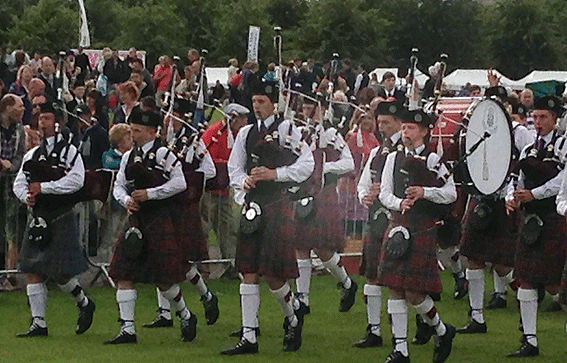
George Watson’s College: A solid piping tone but a rather harsh sound projecting through from the snare drums which affected the band balance a little. The integration between pipes and drums in the march was not quite accurate and the reel I thought was a little too controlled.
St Andrews College, New Zealand: My only comment of significance was that the band collectively lacked depth of sound. The playing was clear, rhythmic and musical and I particularly liked the rhythmic strathspey.
West Lothian Schools: Some distortions in the piping sound were evident, the strathspey was a little laboured and the drummers could have influenced the melodies with more expression and subtlety.
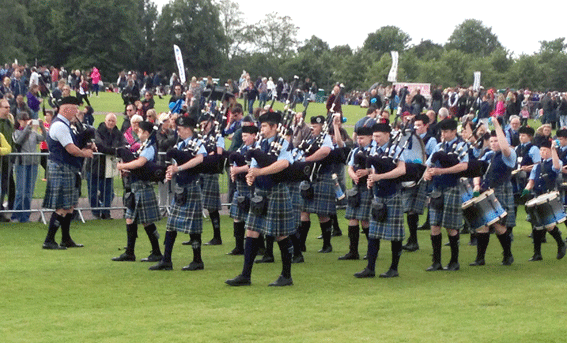
Preston Lodge High School: A good solid piping sound but the drum projection through the pipes was rather dull and lacking in clarity. Both the strathspey and reel came through as slightly laboured.
St Thomas Episcopal School, USA: A good solid and balanced band sound. Generally the performance was fluent, rhythmic and well integrated but perhaps a shade too safe in terms of tempos. More expression from the snare drummers would have helped.
Kintyre Schools: A good collective musical performance but a few tonal and integration issues were evident. The deterioration in the weather did not help.
- Get full results and summaries here. Add your comments below.
[wds id=”5″]

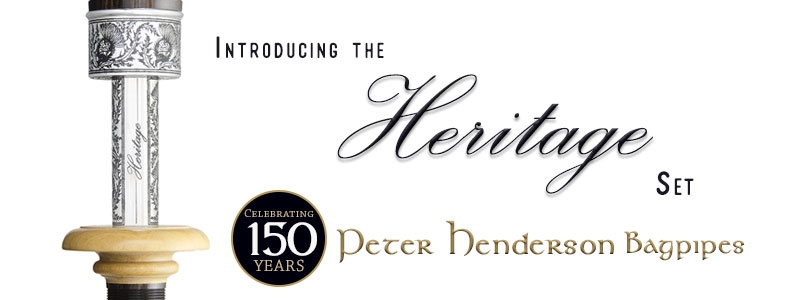

















I enjoyed reading these observations partly because AA is a very knowledgable musician and adjudicator which I have always respected immensely, partly due to the fact that the comments are almost identical to my own experience of the music, which is always nice 🙂 Thanks PP and AA!
Useful insights and perspectives offered here.